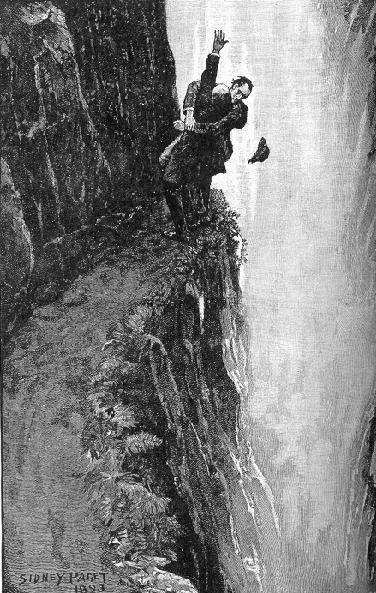WARNING: Spoiler Alert, to those interested, or have not read "The Final Problem" by Arthur Conan Doyle, there are contents and endings of that story in this post. You can find it here.
I have been reading the Sherlock Holmes short stories now since the beginning of this past summer. Holmes was my companion in long nights on-call at the hospital; he has followed me to the parish where he is a source of thought on detection and mission (probably another blogpost for another time). Arthur Conan Doyle has kept a certain symmetry in his stories. They have a formula that is more or less followed. This provides stability for the story to story but began to get stale because 15 stories with the same formula, no matter the case they become easier for the reader.
I have always like the medium that uses to tell his stories. The lost narrator of Dr. Watson keeps the stories human and fallible, like your following the mystery clueless as the narrator is. The mystery is resolved with Holmes being the only one who knew what was happening. This also gives personality to the stories, where an omniscient narrator would fall short. Doyle’s style and meter is portrayed through his character of Watson.
In “The Naval Treaty,” the supposed penultimate Holmes story (if one were reading them as they came out in “The Strand”), Doyle breaks the formula and splits the story up into two issues. Not everything is resolved in the normal time frame. The mystery itself, which has no bearing on this post (therefore, you should read it for yourself in one of the many editions of the Holmes stories), is one my favorite. It has intrigue and governmental importance. Holmes isn’t just helping a country page or, just an old friend of Watson; he’s helping keep stable international relations.
This is followed by “The Final Problem.” All previous formulae are thrown out the window. We enter with Watson in media res, but with a sobering personal note that has more sentimentality and candidness than the normal Watson narration. Doyle starts to weave a great story were Holmes has final met his match, “the Napoleon of crime,” Professor Moriarty. There is no mystery in the story. All the mystery has been solved. This story written by Watson is to vindicate his best friend.
 |
| Sidney Paget's sketch in the original publication of "The Final Problem" |
I had read in previous articles, blogs, and the like that this is the story were Sherlock Holmes dies. I was looking forward to this. How was Doyle going to oust his character? I figured it would be dramatic in typical Holmes style. Gunshot seemed the best way to take care of someone as smart and agile as Holmes (the BBC series of this past year moved in this direction). Instead, it is done is secrecy. Our limited narrator does see his beloved friend die. He intuits both Holmes’ and Moriarty’s deaths, but as a reader, that is not certain evidence in a Holmes story (knowing that Doyle writes a novel and 10 or so more stories after this doesn’t help in my suspicion). I honestly was let down. Watson gave a eulogy to his friend but he seems to betray his own detective ignorance while trying to use his friend’s skills.
This was by far Doyle’s best Holmes story to date that I have read, and I was still let down. If you are lover of mystery, or of great characters, or of detection, you would be doing yourself a disservice by not reading Doyle’s Holmes adventures.
No comments:
Post a Comment